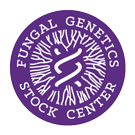Strain: Neurospora crassa
FGSC #4690
Reporting Genes: cys-3 eas
Species: crassa
Allele: NM27(t) UCLA191
Alternate Strain Number: MLS 90-39
Depositor: MLS
Linkage Group: IIL IIR
Mating Type: a
Opposite Mating Type: 4689
ref1: NN 32:12-13, https://doi.org/10.4148/1941-4765.1570
Genes
